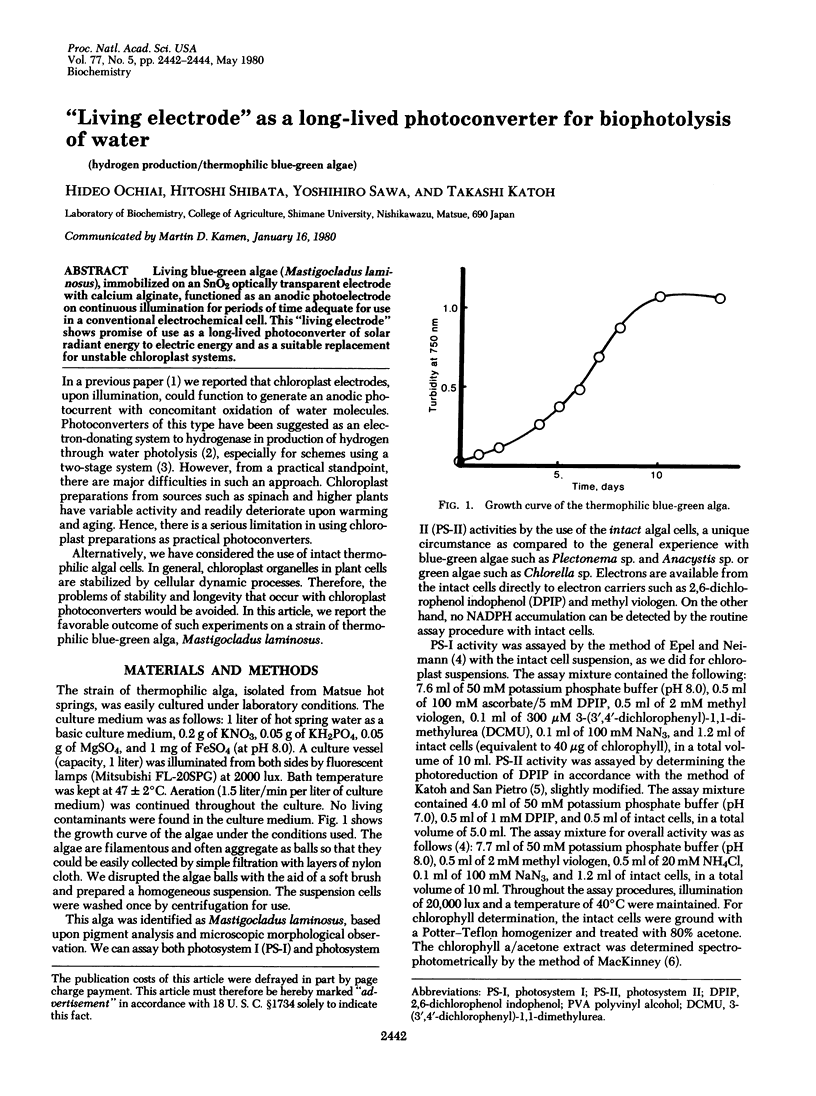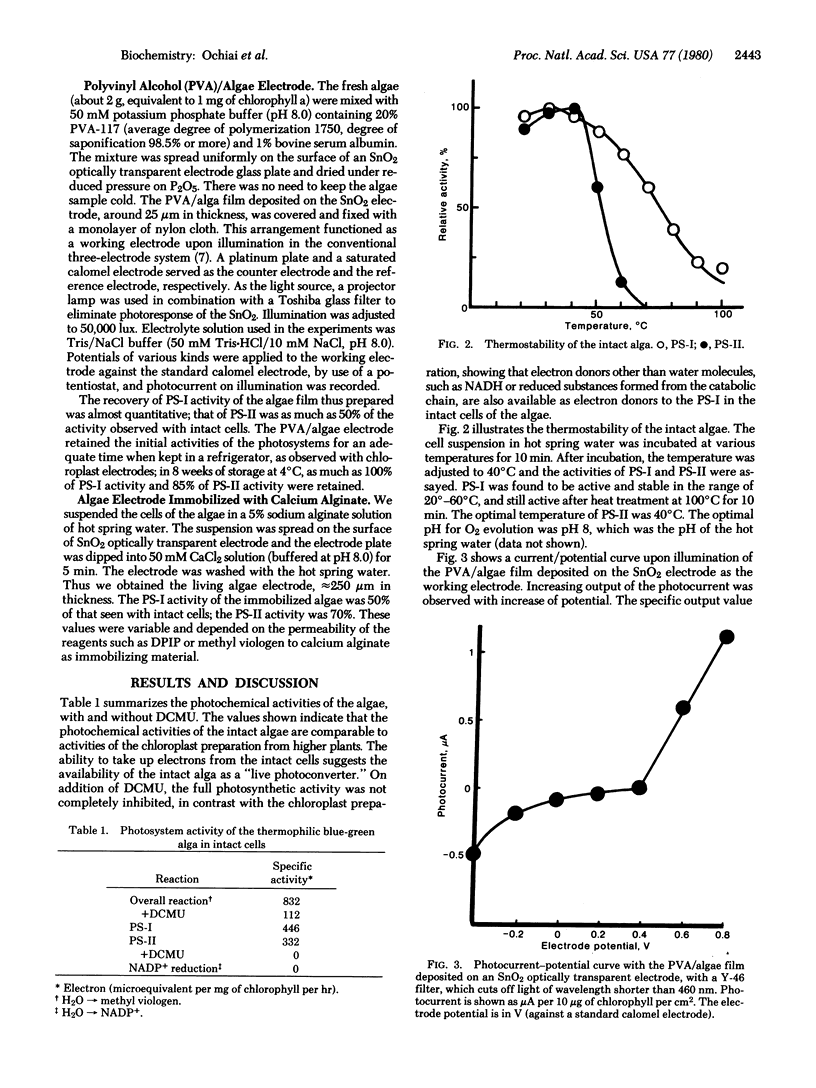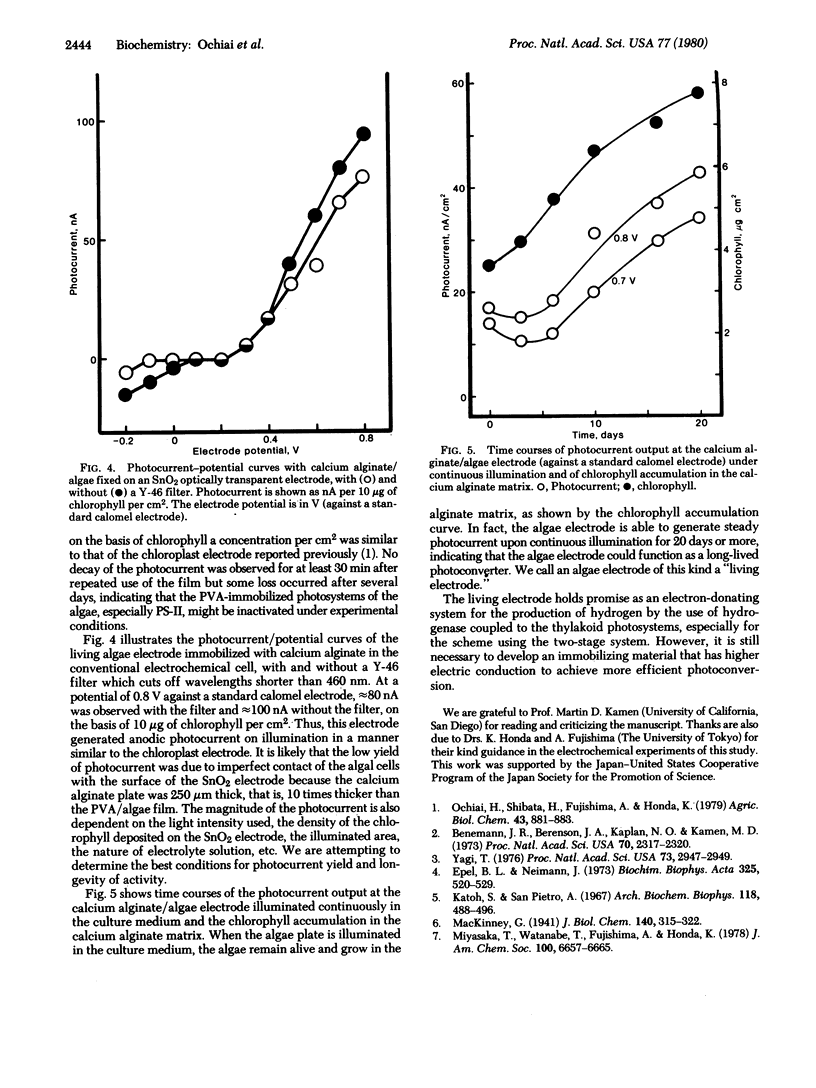Abstract
Living blue-green algae (Mastigocladus laminosus), immobilized on an SnO2 optically transparent electrode with calcium alginate, functioned as an anodic photoelectrode on continuous illumination for periods of time adequate for use in a conventional electrochemical cell. This “living electrode” shows promise of use as a long-lived photoconverter of solar radiant energy to electric energy and as a suitable replacement for unstable chloroplast systems.
Keywords: hydrogen production, thermophilic blue-green algae
Full text
PDF


Selected References
These references are in PubMed. This may not be the complete list of references from this article.
- Benemann J. R., Berenson J. A., Kaplan N. O., Kamen M. D. Hydrogen evolution by a chloroplast-ferredoxin-hydrogenase system. Proc Natl Acad Sci U S A. 1973 Aug;70(8):2317–2320. doi: 10.1073/pnas.70.8.2317. [DOI] [PMC free article] [PubMed] [Google Scholar]
- Epel B. L., Neumann J. The mechanism of the oxidation of ascorbate and MN2+ by chloroplasts. The role of the radical superoxide. Biochim Biophys Acta. 1973 Dec 14;325(3):520–529. doi: 10.1016/0005-2728(73)90211-9. [DOI] [PubMed] [Google Scholar]
- Katoh S., San Pietro A. The role of C-type cytochrome in the Hill reaction with Euglena chloroplasts. Arch Biochem Biophys. 1967 Feb;118(2):488–496. doi: 10.1016/0003-9861(67)90377-3. [DOI] [PubMed] [Google Scholar]
- Yagi T. Separation of hydrogenase-catalyzed hydrogen-evolution system from electron-donating system by means of enzymic electric cell technique. Proc Natl Acad Sci U S A. 1976 Sep;73(9):2947–2949. doi: 10.1073/pnas.73.9.2947. [DOI] [PMC free article] [PubMed] [Google Scholar]


